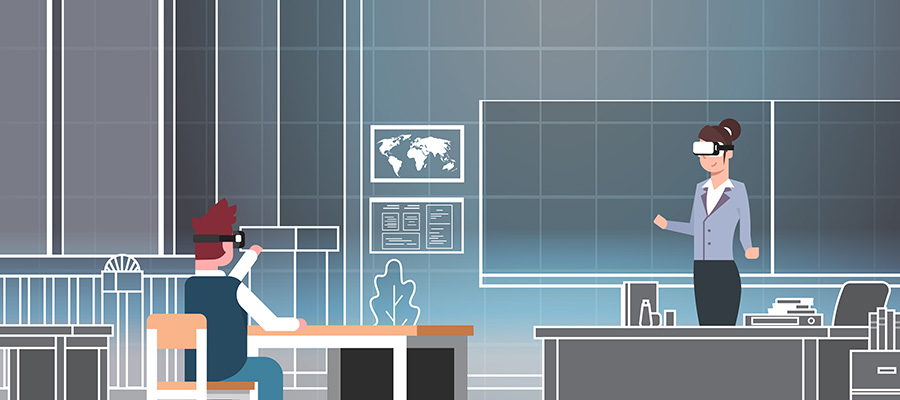What exactly are universities doing with virtual reality (VR) and augmented reality (AR)? How do they use these highly sophisticated technologies in teaching, research and more? Here are 8 ways in which some of the most renowned academic institutions use VR and AR!
1. For students and teachers
More and more universities are offering programs of study for those who want to learn more about VR and AR. Universities are also more inclined to integrate these cutting-edge technologies as a teaching method.
The National University of Singapore offers courses in interactive VR and AR design, while the University of British Columbia uses the HoloBrain application to teach and evaluate neuroanatomy.
2. Multiple medical applications
VR is now suitable for the treatment of various physical and psychological health problems. It is useful to enable students to understand anatomy and to practice surgery without compromising the health of living subjects.
The Department of Psychiatry at Oxford University uses VR to treat height fear and social anxiety, while McGill University uses AR for ear, nose and throat surgery.
3. Help for professional learning practice
Both VR and AR provide professionals with a safe environment to learn to master complex and potentially dangerous tasks. In addition, they allow several individuals to practice at the same time, overcoming physical distance.
The McGill Symphony Orchestra allows musicians to come together virtually, to practice. The Swiss Federal Institute of Technology has combined artificial intelligence (AI) and VR to create an adaptive driving simulator.
4. In the service of the arts and literature
Some universities use the possibilities of VR and AR for creative purposes, whether to create new visual experiences or to stimulate research in creative writing by generating new ideas.
The Massachusetts Institute of Technology (MIT) presents an immersive experience called “The Enemy.” It invites the visitor to experience first-hand, through the VR, the testimony of soldiers from both sides of conflicts around the world. The National University of Seoul presents VR and AR installations incorporating works of so-called “holo-kinetic” painting, a pictorial art created on a computer screen.
5. Evolving technology
For them to evolve, VR and AR must themselves be the subject of research! Several universities are therefore studying hardware, software, and combinations of technologies used in both VR and AR.
The California Institute of Technology (Caltech) has developed a platform that combines artificial intelligence (AI) (including machine learning), big data, VR and AR.
6. Human-computer research
Research on human-computer interaction is a field of study that is being deployed to improve our use of virtual technologies. It explores the many possibilities in this regard, including the visualization of information and human cognition in a VR context.
Stanford University has established a virtual human interaction laboratory.
7. “Hooking” students
VR and AR are very attractive, and some universities use them to recruit new students or participants to their public relations activities.
The Savannah School of Art and Design sent Google Cardboard VR headsets to the 30,000 newly admitted students so they could take a virtual tour of the campus. The college saw its enrolment jump by 26%.
8. The university “playground”
Almost all universities have a play area where their communities can experiment with headsets, computer equipment, and VR and AR software.










Leave A Comment